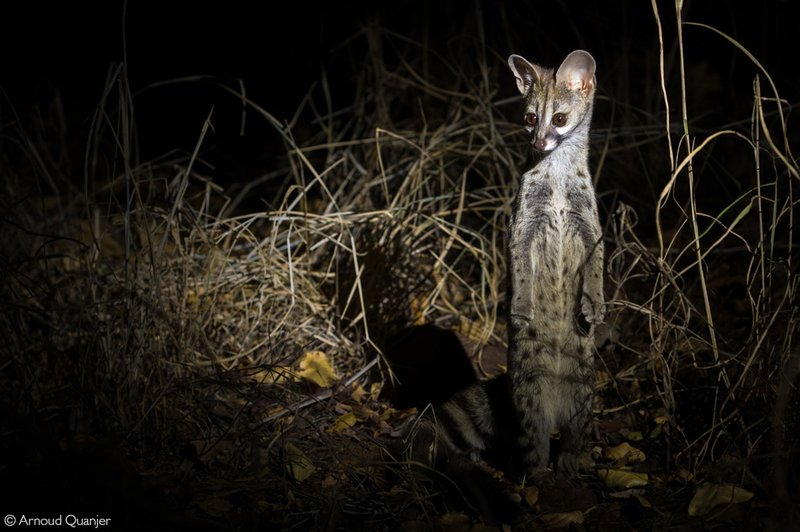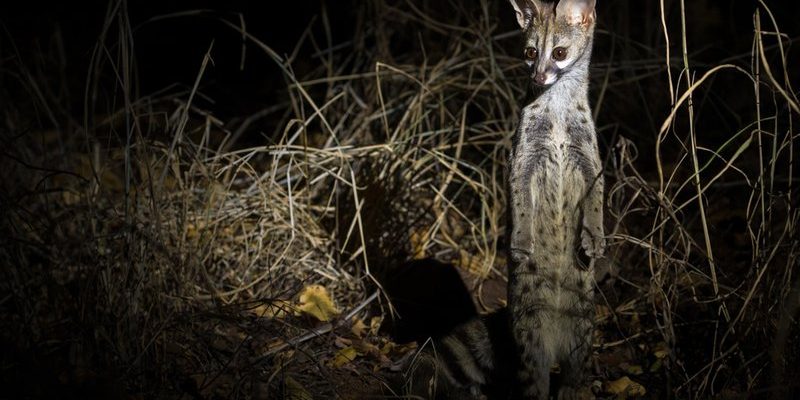
Genets belong to a family of carnivorous mammals known as the Viverridae, which also includes civets and mongooses. These nimble creatures are primarily seen in Africa, but their range does extend to parts of Europe and the Middle East. They occupy a variety of environments, adapting to both forested areas and more arid regions. So, if you’re ready to delve into the world of genets and discover where these fascinating animals make their home, let’s explore their habitat and distribution in detail.
Understanding Genet Habitats
Genets thrive in diverse habitats, showcasing their adaptability. You might find them in:
- Forests: Dense forests provide plenty of cover, allowing genets to hunt and hide from predators.
- Savannas: Open grasslands are also ideal, where they can easily spot both prey and threats.
- Scrublands: These semi-arid areas offer an abundance of small mammals and birds for genets to feast on.
You’re probably wondering why they prefer these habitats so much. Well, forests and savannas provide shelter and ample food options. Genets are primarily nocturnal hunters, using their keen senses to navigate the darkness in search of insects, rodents, and fruit. Their sleek, agile bodies allow them to climb trees, which is another reason why dense forests appeal to them.
Geographical Distribution of Genets
When we talk about where genets live, we’re looking at a pretty interesting geographical distribution. Genets can be found primarily across:
- Sub-Saharan Africa: This region is rich in biodiversity and is home to several species of genets.
- Southern Europe: The common genet, in particular, has established populations in countries like Spain and Portugal.
- Western Asia: Some species have ventured into parts of the Middle East.
Think of it this way: the genet’s habitat mirrors its dietary needs and lifestyle. In Africa, they’ve established a presence in places where food is plentiful and cover is available. If you were to venture into a savanna or forest in countries like South Africa or Morocco, you might just catch a glimpse of one if you’re lucky!
Types of Genets and Their Specific Habitats
There are several species of genets, and each kind has its own preference when it comes to habitat. Let’s take a closer look at a few:
Common Genet
The common genet is probably the one you’ve heard of the most. With its long body and beautiful fur, it’s found in a range of habitats from thick woodlands to open fields. This species prefers areas with substantial vegetation, which provides both food and safety.
Large-Spotted Genet
As the name suggests, the large-spotted genet has distinctive spots and is primarily found in the tropical and subtropical forests of Africa. They thrive in regions where the humidity is high and trees are abundant, allowing them to climb with ease.
Rusty-Spotted Genet
Then there’s the lesser-known rusty-spotted genet, mostly found in scrub and grassland habitats. This species is smaller and adapted to more arid regions, showing just how versatile genets can be.
Each type of genet has adapted to its environment in unique ways, helping them survive and thrive wherever they roam.
Environmental Threats to Genets
While genets are quite adaptable, they’re not immune to the challenges posed by human activity. Here are some environmental threats they face:
- Habitat Loss: Urban development and agriculture can destroy the natural habitats of genets, forcing them to relocate.
- Climate Change: Shifting weather patterns can alter their habitats, affecting food availability.
- Hunting and Poaching: Some species are hunted for their fur, which puts further pressure on their populations.
Here’s the thing: if we want to ensure that future generations can enjoy the sight of these remarkable creatures, protecting their habitats and addressing climate change need to be a priority.
The Importance of Genets in Ecosystems
You might be asking yourself why genets matter in the grand scheme of things. These furry little hunters play a crucial role in their ecosystems.
For starters, they help control pest populations by preying on rodents and insects. This natural pest control is vital for maintaining healthy ecosystems. Plus, by dispersing seeds through their diet, they contribute to plant diversity in their habitats.
In a way, it’s like they’re little ecosystem engineers, helping maintain the balance of life in their territories.
Conservation Efforts for Genets
As with many wildlife species, conservation efforts are essential to ensure genets continue to thrive. Here’s what’s being done:
- Protected Areas: Establishing wildlife reserves helps maintain natural habitats free from development.
- Research: Studying genets helps us understand their needs and how to protect them better.
- Public Awareness: Educational programs raise awareness about the importance of genets and their habitats.
By supporting these efforts, we can help safeguard the future of genets and the ecosystems they inhabit.
Final Thoughts on Genet Habitats
Genets are more than just cute, spotted creatures; they are key players in their ecosystems with unique habits and adaptations. Understanding where genets live helps us appreciate their role in nature and the importance of preserving their habitats.
So, the next time you think of a cozy forest or a vibrant savanna, remember the genets that might be leaping through the trees or prowling through the tall grass. They remind us of the beauty and complexity of wildlife, and why we need to cherish it.

